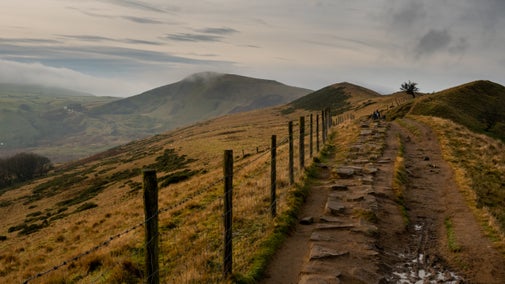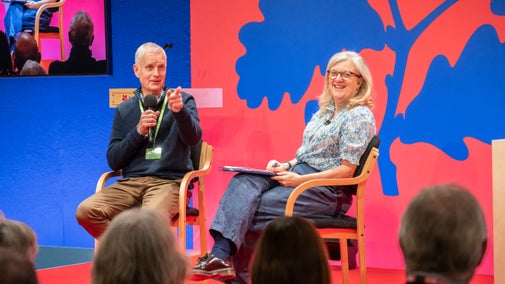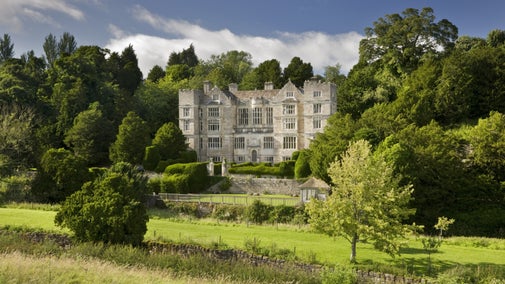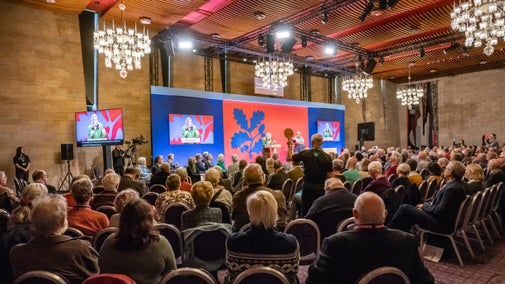
Our position on trail hunting

Jump to
Read our position on trail hunting and how to report incidents of trespassing on land in National Trust care.
Trail hunting and the law
Hunting wild mammals, including foxes and stags, with dogs was banned in England and Wales by the Hunting Act of 2004. The land in National Trust care is no exception.
The law does allow what's known as 'trail hunting'. This activity involves people on foot or horseback following a scent along a predetermined route with hounds or beagles. It effectively replicates a traditional hunt but without an animal being chased, injured or killed.
Trail hunting on National Trust land
We're no longer issuing licences for any trail hunting activities, including the exercising of hounds. We're only licensing drag hunting – all other forms of hunting will not be licensed on the land in our care.
In coming to a decision on this complex, contentious issue, our Board of Trustees considered a wide range of factors, including but not limited to the appropriate use of charitable funds, the risk of reputational harm to the Trust, and the result of the recent members’ resolution vote on this matter at our October 2021 Annual General Meeting.
Please note:
- The Trustees' decision means that no licences will be issued for the exercising of hounds on National Trust land.
- There may still be some ceremonial meets on National Trust land which will not involve trail hunting activity.
- Trail hunting groups, like other groups, don't require licences to cross our land if they remain on bridleways or other public rights of way.
Reporting an incident
If you think you've witnessed an incident of trespass on land in our care, we ask that you report it with as much detail as possible, including the location and the name of the group in question, to enquiries@nationaltrust.org.uk and to our staff on the ground where possible.
While incidents of trespass have significantly declined in the last few years, we understand the concerns raised and want to assure people that we're doing what we can to reaffirm our position. The size of our countryside sites mean it is impossible for our staff to be everywhere at once, and we must also keep the welfare of staff in mind.
However, we investigate all incidents of possible trespass and keep all options under consideration. We always speak to any known hunts that are found to have trespassed to reiterate our boundaries and reaffirm that they have no right or permission to be on our land.
Drag hunting
Drag hunting is an equestrian event created in the 1800s. A scent is laid along a predetermined route, which leads to specific fences. Drag hunts use a variety of hounds, including foxhounds and bloodhounds. Bloodhounds track a human runner, while other hounds follow a chemical scent (usually aniseed).
The aim of drag hunting isn't to chase animals. Hounds are trained not to follow live quarry, and the routes are laid in areas where a live quarry presence is unlikely. Drag hunting can provide an alternative to the use of a pack of hounds in the countryside while minimising the risk to wildlife.
As the route is predetermined, the hounds can be kept safely away from livestock, vulnerable crops, roads and railway lines. The route can also be organised so that the risk to sensitive and fragile habitats can be minimised. Drag hunting is governed by the Masters of Draghounds and Bloodhounds Association.

You might also be interested in
Flying drones at our places
All aerial activity above our sites is prohibited unless specific permission is granted, according to an existing byelaw.

Follow the Countryside Code
Help to look after National Trust places by observing a few simple guidelines during your visit and following the Countryside Code.

AGM procedures and reports
The Annual General Meeting is convened in accordance with The Charities (National Trust) Order 2005. Find out more about what this means.

About the National Trust today
Discover more about our legacy, people and values as a conservation charity. We protect historic places and green spaces while opening them up for everyone, for ever.

How we are run
Discover how the National Trust is run, how our governance arrangements are underpinned by Acts of Parliament and how they are designed to support and challenge our staff.
